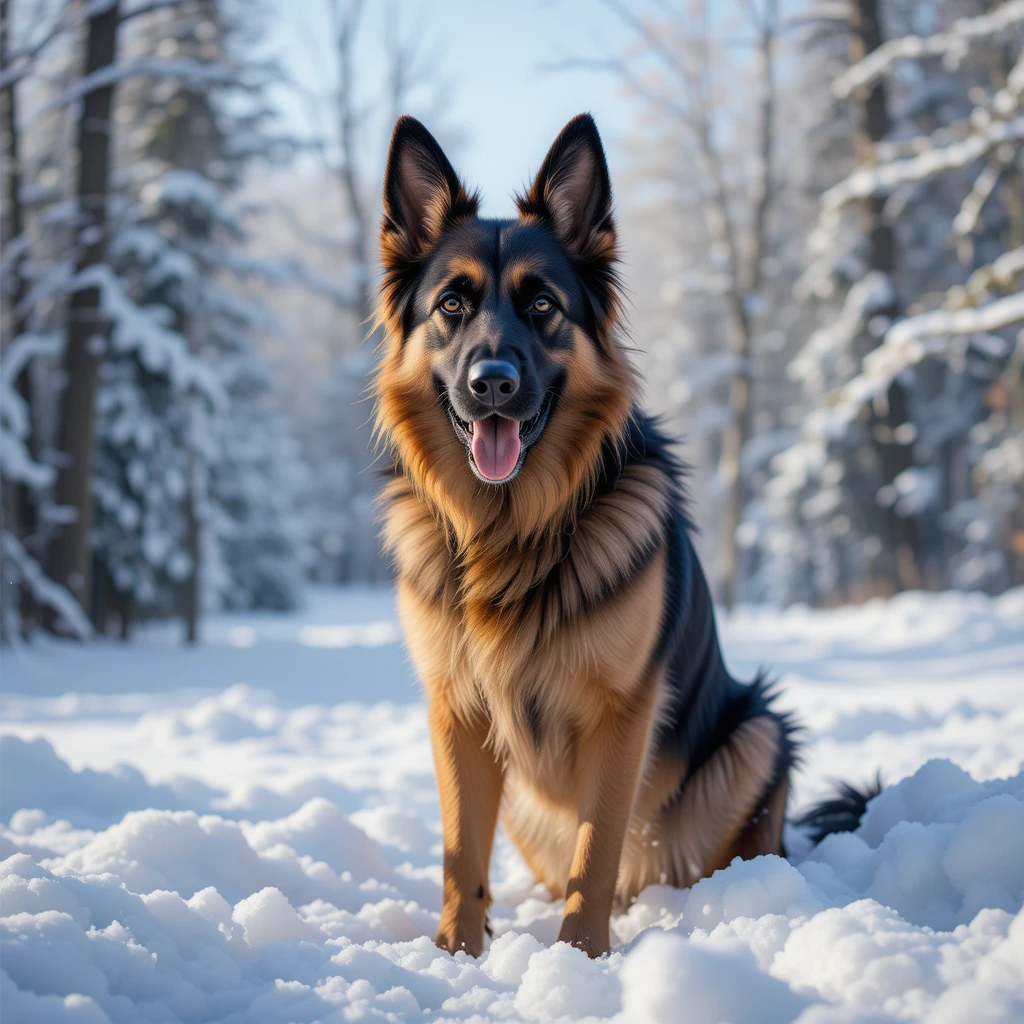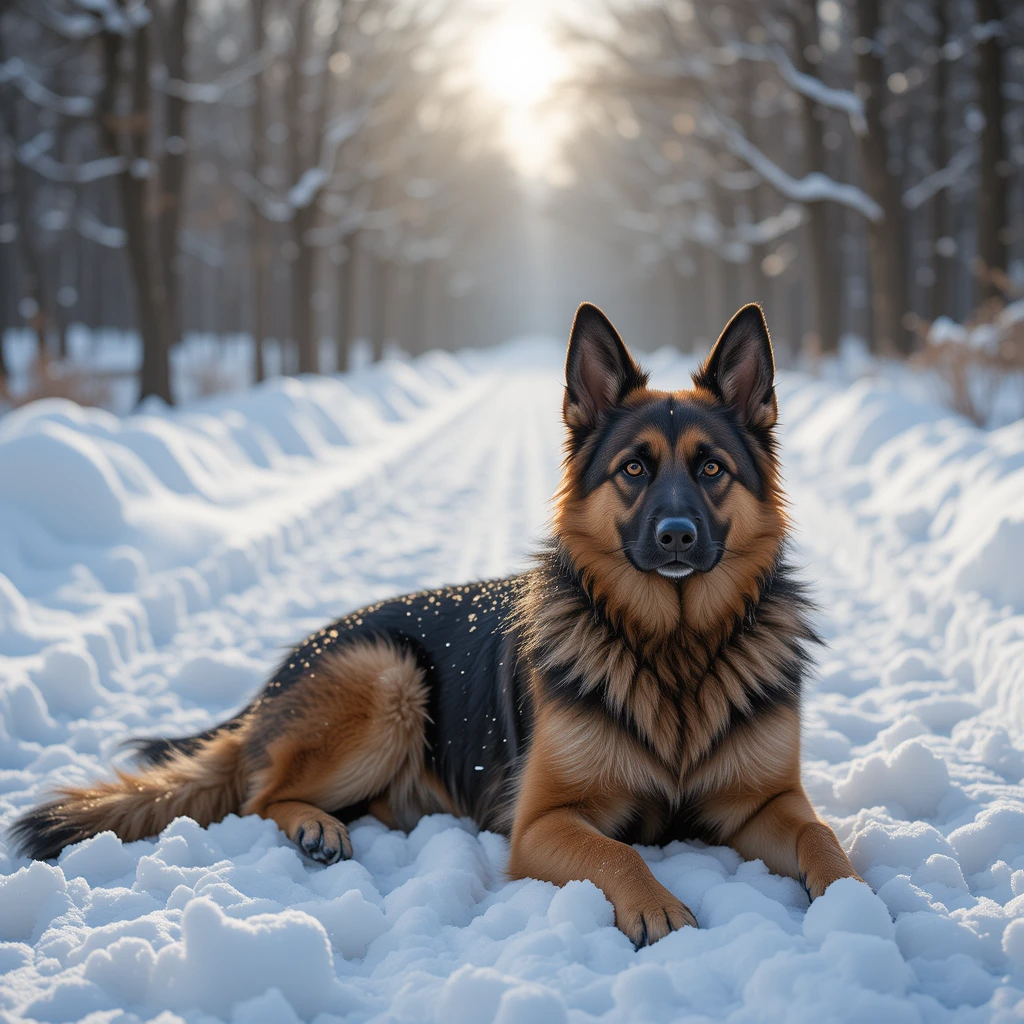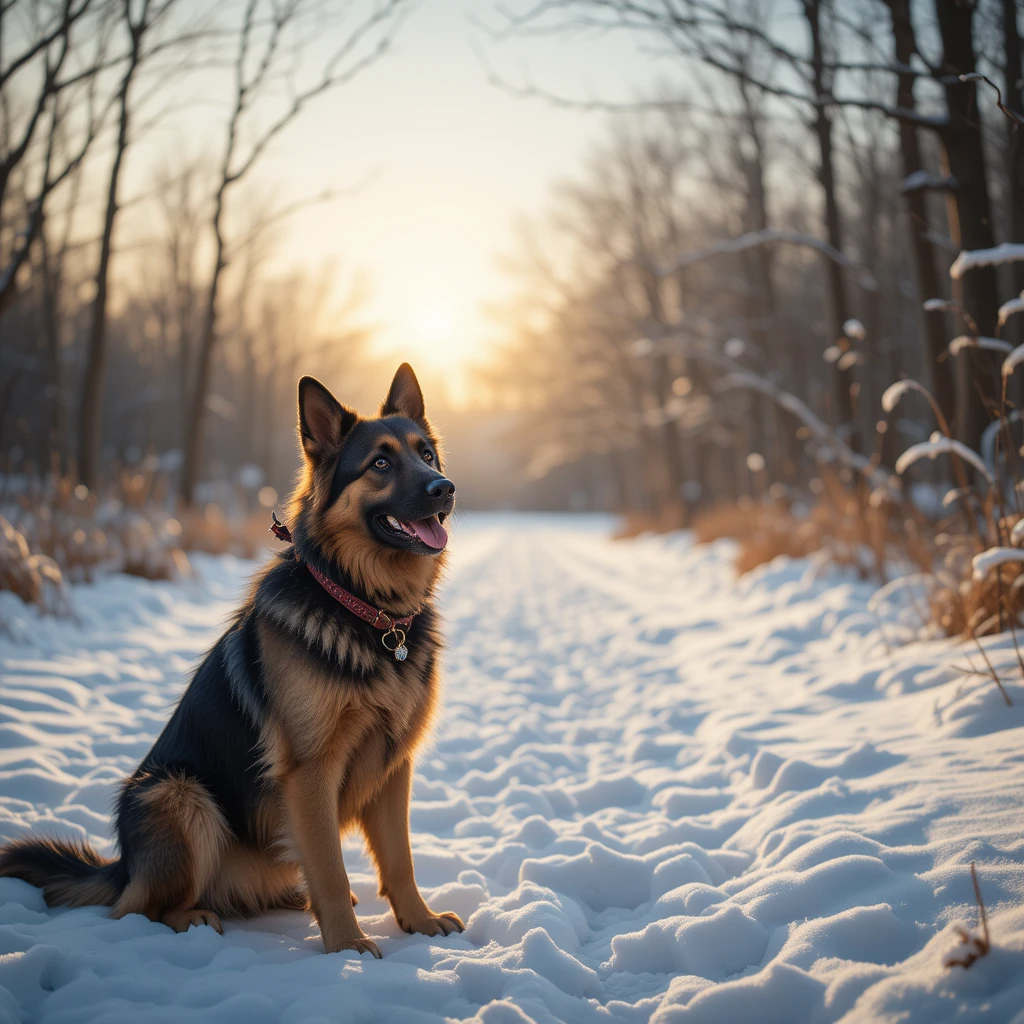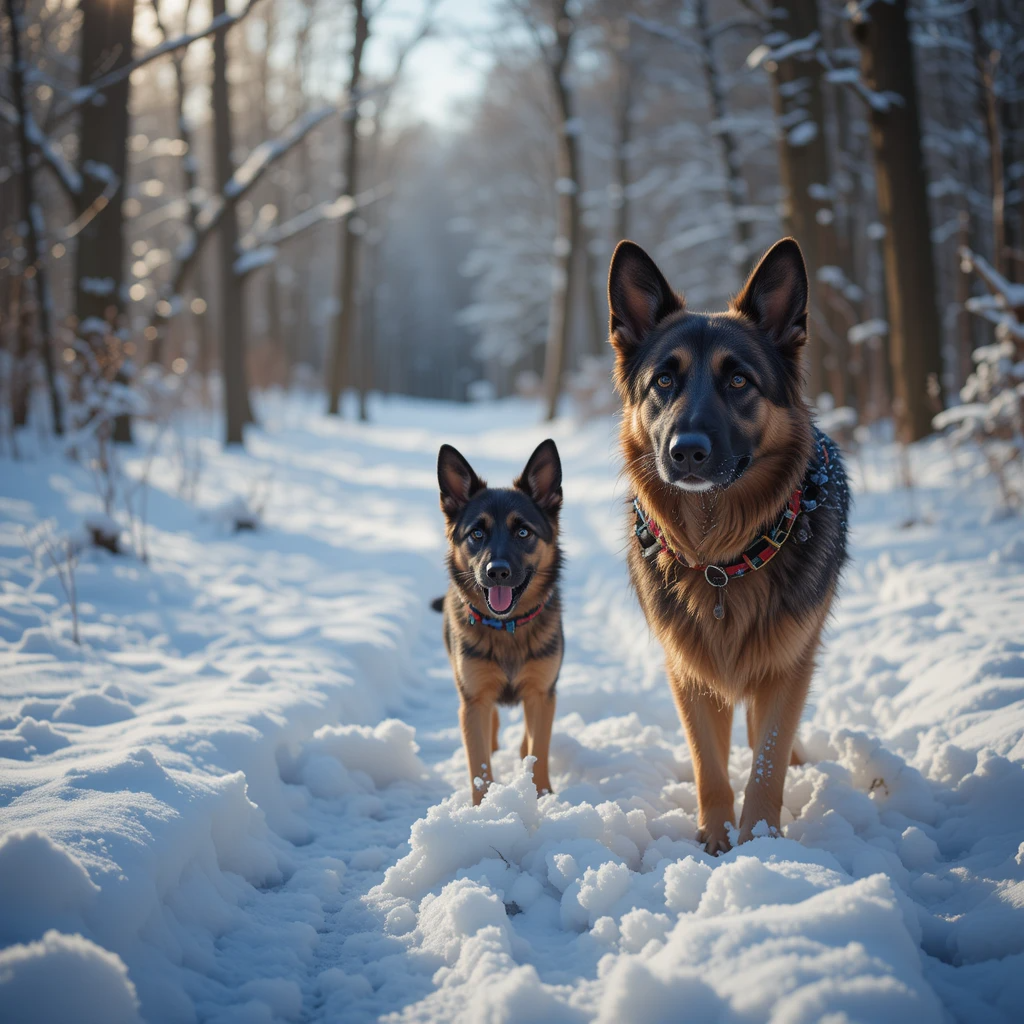As the air turns crisp and the first signs of Winter with Your German Shepherd snow begin to fall, it’s time to prepare for winter with your German Shepherd. These intelligent and energetic dogs thrive in cooler temperatures, but the winter months bring their own set of challenges. With a little planning and care, you can ensure that your German Shepherd remains happy, healthy, and comfortable throughout the cold season.
Table of Contents
1. Winter Coat Care: The Essentials
German Shepherds are built for cold weather with their thick, double-layered coat. However, just because they are naturally equipped for winter doesn’t mean they don’t need help staying at their best. A regular brushing routine is crucial, especially in winter when shedding increases. The undercoat can get matted with snow, and tangled fur can cause discomfort and even skin irritation.
Brushing your dog’s coat not only keeps them comfortable, but it also helps distribute natural oils through their fur, which is essential for maintaining a healthy, shiny coat. Use a de-shedding tool to remove loose hair, especially during the shedding season.
You may also want to consider a winter dog coat for extra warmth, particularly for older dogs or those that aren’t as active. It’s important to find one that fits properly and is easy to put on and remove, so your German Shepherd can stay comfortable when outside for short periods.

2. Diet Adjustments: Fueling the Winter Energy
Winter can bring more physical challenges, and your dog’s calorie needs may increase depending on their activity level. German Shepherds are known for their high energy, so if you’re still keeping up with regular exercise or outdoor adventures, your dog may require extra food to support their metabolism.
Make sure you’re feeding them high-quality food that’s rich in the essential nutrients they need. Foods with healthy fats are excellent for maintaining energy levels while keeping their coat glossy. You can also increase their meals slightly, but be careful not to overfeed. Obesity is a concern for German Shepherds, especially during winter when they’re not as active as in warmer months.
To help keep your dog’s immune system strong, you can incorporate natural, healthy treats, like carrots or sweet potatoes, which are both tasty and full of vitamins. If you’re unsure about portion sizes or any specific dietary adjustments, consult your vet.
3. Exercise in Winter: Keeping Your German Shepherd Active
Despite the cold weather, your German Shepherd still needs plenty of exercise. Their high energy levels don’t go away just because the temperature drops. Regular walks, play sessions, and even training activities are crucial for both physical and mental stimulation.
When venturing out, be mindful of ice and slippery roads. To prevent injury, consider getting traction boots or paw pads, especially if you plan on walking through snow, salt-treated sidewalks, or icy conditions. On those particularly cold days, a brisk walk in the morning and then some indoor playtime can also help burn off excess energy.
Winter offers an opportunity for creative indoor games too. Hide-and-seek with toys or treats, or even basic obedience training, can keep your dog mentally sharp and active. It’s not just about burning energy; it’s also about keeping them engaged during long, dark days.
4. Paw Protection: A Must-Have Winter Care Routine
Your dog’s paws are vulnerable during the winter months. Snow, ice, and chemicals like salt can damage their sensitive pads, causing painful cracks or dryness. After every walk, take a few minutes to check their paws for any snow buildup or debris stuck between their toes. You can use a damp cloth to wipe their paws clean.
For extra protection, consider using dog booties. While not every dog loves them at first, they’re a great way to protect your dog’s paws from the harsh elements. If booties aren’t an option, a paw balm can provide a layer of protection before your walks.
If you do decide to skip the booties, make sure you’re drying your dog’s paws thoroughly after each outdoor trip. Moisture left behind in the pads can lead to frostbite if not addressed. Additionally, trim any hair around their paw pads to reduce the chances of snowball formation, which can be both uncomfortable and dangerous for your dog.

5. Creating a Cozy Home Environment
Your home should be a safe, warm refuge for your German Shepherd when the weather is harsh. Even though these dogs are made for colder climates, you should never leave them outdoors in freezing temperatures for long periods.
Create a comfortable resting place for your dog inside the house, free from drafts. A bed with extra blankets or padding can help keep them warm during the night, and placing it away from cold windows or doors will help ensure they stay cozy. If you’re using central heating, make sure that the temperature doesn’t become too dry, as this can lead to dehydration. Keep fresh water available at all times to prevent your dog from becoming too dry, especially with the heating running indoors.
For some dogs, the cold can trigger joint stiffness. German Shepherds are prone to conditions like hip and elbow dysplasia, so consider getting them a heated blanket or orthopedic bed for extra comfort.
6. Health Watch: Signs to Look Out For
While winter can bring excitement, it’s also a time to be extra vigilant about your dog’s health. Be aware of symptoms like excessive shivering, lethargy, or reluctance to walk. These can be signs of hypothermia or frostbite. If you notice your dog is having trouble with the cold, it’s important to seek help from your vet.
German Shepherds are also prone to developing skin problems during winter, especially if their coats get wet or are left damp for too long. Always dry them thoroughly after walks and monitor any areas of redness or irritation on their skin.
Lastly, if your German Shepherd seems stiff or reluctant to move after outdoor play, it could be a sign of joint pain, which can be exacerbated by the cold. Talk to your vet about suitable supplements, pain management, or warming therapies like heat pads or warm baths to keep them comfortable.
7. Safety Concerns: Keep Them Safe from Harm
When you take your German Shepherd outside in winter, be mindful of potential hazards. Ice on lakes, slippery sidewalks, and untreated roads can pose significant risks. Avoid letting your dog roam near frozen bodies of water unless you’re sure they’re completely safe. Snow and ice can mask dangerous obstacles, like fallen branches or rocks, which can injure your dog.
Make sure your dog is visible in snowy conditions by using a brightly colored leash, collar, or reflective gear, especially if you plan to go on walks during early morning or evening hours.

Final Thoughts:
Winter doesn’t have to be a challenging season for you or your German Shepherd. With the right care, you can keep them safe, healthy, and active throughout the colder months. Make adjustments to their diet, exercise, and grooming routines, and ensure they have a cozy and safe environment to retreat to when the weather gets harsh.
When you take the time to prepare properly, winter can be a great opportunity to bond with your dog, whether you’re exploring the snow, curling up by the fire, or enjoying some indoor activities. Your German Shepherd’s winter wellness depends on your commitment to their care—so embrace the season and enjoy it together.

